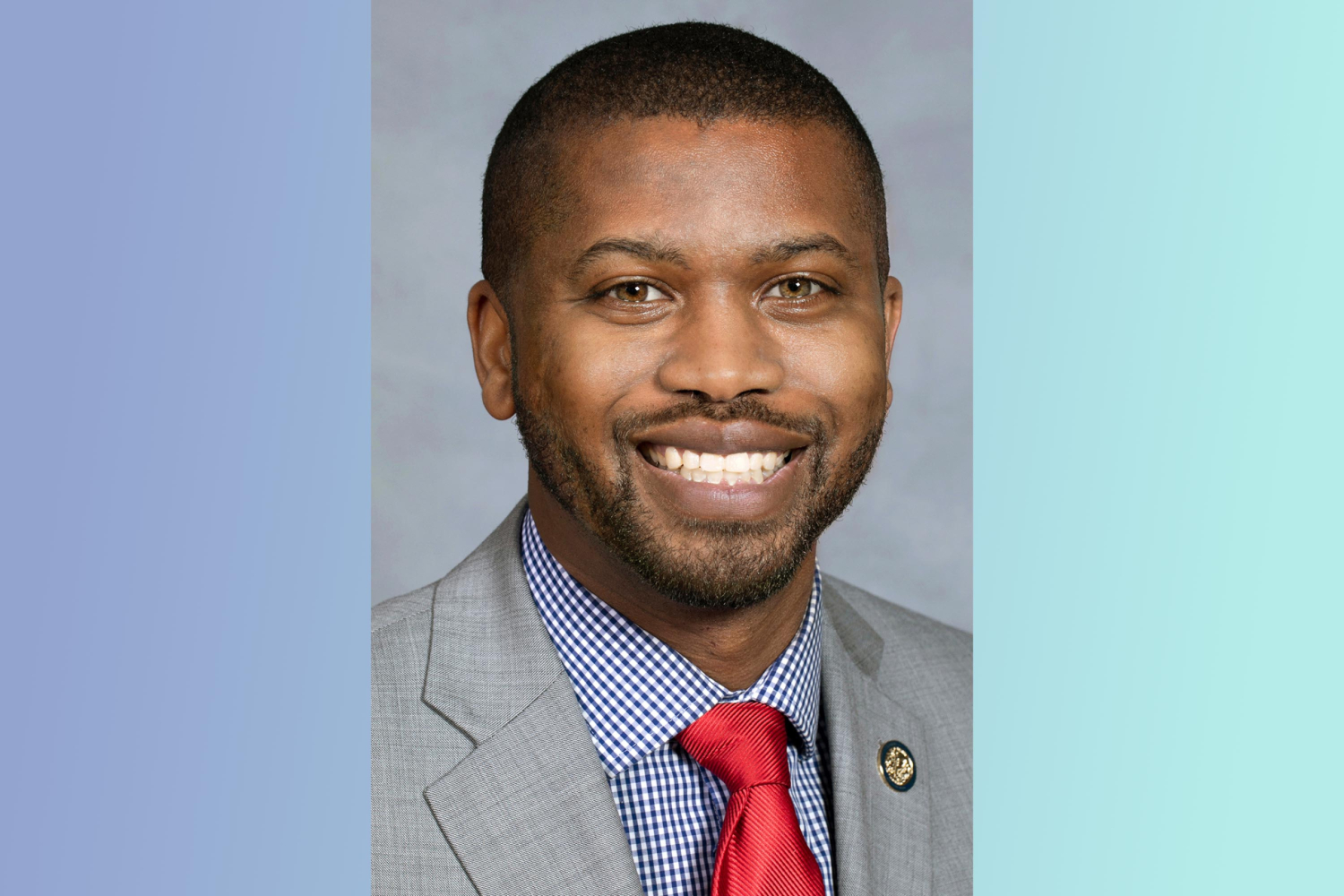Thought of the Day

A fall into a ditch makes you wiser just like mistakes are opportunities to learn.


A fall into a ditch makes you wiser just like mistakes are opportunities to learn.

By PETE IACOBELLI Associated Press
CLEMSON, S.C. (AP) — Nate Sheppard ran for a 3-yard touchdown with 40 seconds left and Darian Mensah completed a 2-point-play to Shamar Hagans as Duke stunned Clemson 46-45 on Saturday for its first win in Death Valley since 1980.
The Blue Devils (5-3, 4-1 Atlantic Coast Conference) trailed 45-38 and started the game-winning drive on their 6-yard line. Mensah led an 11-play drive in which he converted two fourth downs to set up Sheppard’s TD run.
There was no hesitation from Duke coach Manny Diaz, who kept the offense on the field and Mensah quicky found Hagans for the decisive points.
It was another low moment in a terrible season for Clemson (3-5, 1-4), the defending ACC champions and a trendy pick to win Dabo Swinney’s third national title. The Tigers have lost four home games for the first time since 1998.
The Tigers tried a desperation, pass the ball to anyone open play as the clock ran out. When Duke finally stopped the play, the sidelines jumped into joyous celebration. After all, it had been more than four decades since the football Blue Devils had left Death Valley with a victory.
Mensah finished with 361 yards passing and a career-best four touchdown passes.
Clemson piled up the yards and points, too — 560 yards and its most points this season — but could not get the critical stops to avoid a third straight home loss.
Cade Klubnik, in his first game back since getting injured against Boston College last month, passed for 385 yards and two touchdowns for Clemson.
Receiver Antonio Williams caught 10 passes for 139 yards, running for one score and catching another.
Likely NFL first-round defensive lineman Peter Woods added a 1-yard rush off a direct snap for Clemson.
Duke: The Blue Devils pulled out all the stops to snap a 15-game losing streak here. They finished 5-of-5 on fourth downs, four of those coming in the first half. Hagans also had a 100-yard kickoff return score in the third quarter.
Clemson: Things can’t get much lower for the Tigers, on the verge of their worst season of Dabo Swinney’s 17 full seasons. They play Florida State next week and have road games at Louisville and rival South Carolina.
Duke goes to UConn on Saturday.
Clemson plays its final ACC home game against Florida State on Saturday night.


If you are patient in one moment of anger, you will escape a hundred days of sorrow.

NEW YORK (AP) — Heidi Klum donned green scales and squirming snakes to transform herself into Medusa for Halloween on Friday.
Klum said she loves the Greek myth of Medusa, in which a goddess turns a beautiful woman into a monster with serpents for hair, the sight of which turns living things around her to stone.
“So I wanted to be really, really like a really ugly, ugly Medusa. And I feel like we nailed it — to the teeth,” Klum said before pointing to fangs in her mouth.
Her husband, musician Tom Kaulitz, dressed as a man turned to stone.
Klum said she spent 10 hours getting into costume for her annual Halloween party. She said it was all worth it because she loves the celebration.
The supermodel-turned-TV personality went viral in 2022 when she arrived at her party on the end of a fishing line, encased in a slithering worm costume.
In past years, Klum has come dressed as an 8-foot-tall (2.4-meter-tall) “Transformer,” a werewolf from Michael Jackson’s “Thriller” music video, a clone accompanied by several Klum-lookalikes, and Kali, the multiarmed Hindu goddess of death and destruction.
Klum has said she starts planning her costume for the next year immediately after her party wraps.
Among the other celebrities who walked the carpet at the Hard Rock Hotel New York were a green-painted Darren Criss as Shrek, Maye Musk as Cruella de Vil and Ariana Madix as Lady Gaga.
Last year, Klum and Janelle Monáe turned up to their respective parties in the same costume: E.T.
Monáe was hosting her annual party on Friday, too, and came dressed as a vampire attacked by a shark. The actress and singer-songwriter turned the entire month into a series of Halloween-themed immersive experiences across the Los Angeles area, concluding with a party at her home in Studio City. Earlier in the week, she had dressed as the Cat in the Hat.
“Halloween gives context to what I already do every day,” Monáe told The Associated Press earlier in October. “As an artist, I’m always transforming, world-building and inviting people to play in the worlds I create.”
___
This story has been corrected to show that Janelle Monáe was dressed as a vampire on Friday, not the Cat in the Hat.
___
Associated Press journalists John Carucci in New York, Jordan Hicks in Los Angeles, Hannah Schoenbaum in Salt Lake City and Audrey McAvoy in Honolulu contributed reporting.

By MARK FRANK The Associated Press
SYRACUSE, N.Y. (AP) — Demon June accounted for two touchdowns and nearly 200 yards on offense, Gio Lopez threw for two scores, and Bill Belichick won his first Atlantic Coast Conference game when North Carolina came from behind to defeat Syracuse 27-10 Friday night.
The win snapped a four-game losing streak for the Tar Heels (3-5, 1-3 ACC), while the Orange (3-6, 1-5) lost for the fifth consecutive time. North Carolina lost its previous two games by a combined four points.
The Tar Heels had not scored more than 20 points against an FBS team and trailed 10-6 when Lopez hit June for a short gain of 9 yards on the team’s first play of the second half. June then broke a tackle and scampered 63 yards down the right sideline for a 72-yard scoring play to give the Tar Heels a 13-10 lead they would never surrender. On the team’s next series, June ran it in from 5 yards out for a 20-10 margin. A 21-yard scoring strike from Lopez to Jordan Shipp gave the Tar Heels a 27-10 lead and 21 unanswered points.
Lopez was 15-of-19 passing for 216 yards and two touchdowns. June had 101 yards on the ground and 81 yards on two receptions. Shipp had six catches for 64 yards.
Syracuse walk-on Joe Filardi, a true freshman, started at quarterback for the Orange. He was 1 of 11 in the first half and didn’t complete his first pass until 6:12 remained in the half. He finished 4 of 18 for 39 yards. Filardi replaced struggling LSU transfer Rickie Collins, who had gone 0-4 as a starter in relief of Steve Angeli. Angeli, who directed the Orange to a 3-1 start, suffered a season-ending Achilles injury against Clemson. Syracuse hasn’t won since.
The only touchdown in the first half came courtesy of the Syracuse defense. Devin Grant knocked the ball loose from Shamar Easter on a short completion from Lopez. Linebacker Anwar Sparrow scooped up the ball and ran 51 yards for the score with 4:38 to go in the first quarter, giving the Orange a 7-3 lead.
Rece Verhoff had field goals of 24 and 43 yards while Tripp Woody had a 31-yarder for the Orange.
Syracuse managed 12 first downs, generated 147 yards on offense, and averaged only 2.9 yards per play.
North Carolina: The Tar Heels are showing some fight. After two tough losses, North Carolina dominated Syracuse in the second half, albeit against a walk-on quarterback, and could be turning things around.
Syracuse: The Orange are competing without a functional quarterback and a functioning offense. They simply cannot score, putting an awful burden on a defense that is spending too much time on the field.
North Carolina: Home against Stanford Nov. 8.
Syracuse: Travels to No. 10 Miami Nov. 8.

RAEFORD, N.C. (AP) — A North Carolina deputy shot and killed a 13-year-old boy wanted in the killing of his grandmother when the teenager charged toward the officer with a piece of lumber the boy had picked up during a chase, authorities said Friday.
The State Bureau of Investigation will review Thursday’s shooting involving the Lee County sheriff’s deputy, which is a standard protocol.
The events began in Raeford, about 90 miles (145 kilometers) southwest of Raleigh, where the Hoke County Sheriff’s Office said 68-year-old Connie Linen was pronounced dead in her home. Authorities say she was a victim of a homicide but haven’t released details about how she was killed. Deputies initially came to the home in response to a well-being check.
Detectives determined Linen’s grandson to be a suspect, and authorities had completed paperwork charging him with first-degree murder, the Hoke Sheriff’s Office said in a news release.
The Lee County Sheriff’s Office said it was told about the homicide, and officers later found the boy behind an abandoned mobile home in the Cameron area.
When deputies approached the boy, he ran away, authorities said. The teenager grabbed a two-by-four from a yard during the pursuit and charged toward an officer, who shot the teen, the Lee County Sheriff’s Office said. The office’s news released described the boy as 5 feet, 11 inches (1.8 meters) tall and 150 pounds (68 kilograms).
Lee County Sheriff Brian Estes and the State Bureau of Investigation didn’t immediately respond to emails Friday seeking more information about the shooting and the investigation.
“This has been a tragic and emotional situation for everyone involved,” Hoke County Sheriff Roderick Virgil said Friday. “We ask that our community come together with compassion and understanding as we all process this difficult event.”

By GARY D. ROBERTSON Associated Press
RALEIGH, N.C. (AP) — A North Carolina state lawmaker accused by authorities of sex-related crimes involving a 15-year-old resigned his legislative seat on Friday. His departure came just after the House speaker announced a committee to investigate his alleged misconduct.
The House clerk’s office received a letter signed by Democratic Rep. Cecil Brockman of High Point to resign effective immediately.
House leaders from both parties, as well as Democratic Gov. Josh Stein, had called on Brockman to resign since his arrest three weeks ago on two counts each of statutory sexual offense with a child and taking indecent liberties with a child.
Brockman, who had served in the House since 2015, wrote that he needed to focus on his defense given the serious allegations against him.
“As a result, I am currently unable to fulfill my duty and service to my constituents,” Brockman said. Democratic officials in Brockman’s Guilford County district will now choose someone to complete his two-year term through the end of 2026.
Republican House Speaker Destin Hall had announced earlier Friday a bipartisan House committee “to investigate the charges and recommend expulsion if necessary” from the chamber, a Hall news release said. The state constitution gives the House authority to remove its members. The full House last voted to remove a member in 2008.
Hall said later Friday that Brockman’s “departure spares the House from a difficult expulsion process and brings closure to this troubling chapter.”
Records show Brockman, 41, remained in jail Friday on a bond of just over $1 million. A court hearing on a request by Brockman’s attorney to reduce the bond is scheduled for Monday.

By BRUCE SHIPKOWSKI Associated Press
A bird sighting on New York’s Long Island has avian enthusiasts flocking to the region in hopes of spotting a feathered friend that has never been seen before in the state.
The common cuckoo is typically found from Europe to Japan, with the majority of the population wintering in Africa. But one was recently spotted in Riverhead — a town on the north shore of Long Island about 75 miles (120 kilometers) from New York City — by a golfer who snapped a photo and sent it to his nephew, a birding enthusiast.
The information eventually was shared with the Cornell Lab of Ornithology in Ithaca, New York. Once the bird was confirmed as a common cuckoo, birders quickly shared the news in their communities.
The bird has since been spotted more than 200 times by enthusiasts who have noted their sightings on the birding site ebird.org and various social media sites, including the American Birding Association. Many people in other parts of the U.S. also have reported making special treks to the region in hopes of seeing it for themselves. The last confirmed sightings came late Sunday afternoon.
It’s not clear how or why the bird ended up in southern New York, or if it’s even still in the region. Experts say it’s a juvenile — meaning it hatched this spring or summer — so it’s reasonable to conclude it was trying to migrate for the winter but somehow got lost or blown off course.
The common cuckoo has been found only three other times in the eastern U.S. and Canada, experts said.
Jay McGowan, a curator at the Cornell Lab’s Macaulay Library, said Thursday that the bird may still be in the area, but if it has relocated, it may be unlikely anyone will happen across it again. He urged anyone who does see it to report their sightings to the birder community.
“This is definitely a major event for anyone birding in New York state, and unusual enough for the broader region,” McGowan said, adding that he’s not surprised to see many people are willing to make long trips to the area for a chance to see a bird they would otherwise be unlikely to see unless they went to Europe or Asia.
”If people see it, they shouldn’t approach too closely for photos, but otherwise it’s fairly tolerant of people and traffic,” McGowan said. “It looks a lot like a small hawk, like the common Cooper’s hawk, so don’t be fooled if you see one of those.”

By ARIEL FERNÁNDEZ, ANDREA RODRÍGUEZ and JOHN MYERS JR. Associated Press
SANTIAGO DE CUBA, Cuba (AP) — The rumble of large machinery, whine of chain saws and chopping of machetes echoed through communities across the northern Caribbean on Thursday as they dug out from the destruction of Hurricane Melissa and surveyed the damage left behind.
In Jamaica, government workers and residents began clearing roads in a push to reach dozens of isolated communities in the island’s southeast that sustained a direct hit from one of the most powerful Atlantic hurricanes on record.
Stunned residents wandered about, some staring at their roofless homes and waterlogged belongings strewn around them.
“I don’t have a house now,” said Sylvester Guthrie, a resident of Lacovia in the southern parish of St. Elizabeth, as he held onto his bicycle, the only possession of value left after the storm.
Emergency relief flights were landing at Jamaica’s main international airport as crews distributed water, medicine and other basic supplies. Helicopters dropped food as they thrummed above communities where the storm flattened homes, wiped out roads and destroyed bridges, cutting them off from assistance.
“The entire Jamaica is really broken because of what has happened,” Education Minister Dana Morris Dixon said.
Officials said at least 19 people have died in Jamaica, including a child, and they expected the death toll to keep rising. In one isolated community, residents pleaded with officials to remove the body of one victim tangled in a tree. On Thursday, dozens of U.S. search-and-rescue experts landed in Jamaica along with their dogs.
More than 13,000 people remained crowded into shelters, with 72% of the island without power and only 35% of mobile phone sites in operation, officials said. People clutched cash as they formed long lines at the few gas stations and supermarkets open in affected areas.
“We understand the frustration, we understand your anxiety, but we ask for your patience,” said Daryl Vaz, Jamaica’s telecommunications and energy minister.
Water trucks have been mobilized to serve many of Jamaica’s rural communities that are not connected to the government’s utility system, Water Minister Matthew Samuda said.
In Cuba, heavy equipment began to clear blocked roads and highways and the military helped rescue people trapped in isolated communities and at risk from landslides.
No deaths were reported after the Civil Defense evacuated more than 735,000 people across eastern Cuba ahead of the storm. Residents were slowly starting to return home Thursday.
The town of El Cobre in the eastern province of Santiago de Cuba was one of the hardest hit. Home to some 7,000 people, it is also the site of the Basilica of Our Lady of Charity, the patron saint of Cuba who is deeply venerated by Catholics and practitioners of Santería, an Afro-Cuban religion.
“We went through this very badly. So much wind, so much wind. Zinc roofs were torn off. Some houses completely collapsed. It was a disaster,” said Odalys Ojeda, a 61-year-old retiree, as she looked up at the sky from her living room where the roof and other parts of the house were torn away.
Even the basilica wasn’t spared.
“Here at the sanctuary, the carpentry, stained glass and even the masonry suffered extensive damage,” Father Rogelio Dean Puerta said.
A televised Civil Defense meeting chaired by President Miguel Díaz-Canel did not provide an official estimate of the damage. However, officials from the affected provinces — Santiago, Granma, Holguín, Guantánamo, and Las Tunas — reported losses of roofs, power lines and fiber optic telecommunications cables, as well as roads cut off, isolating communities, and heavy losses in banana, cassava and coffee plantations.
Many communities were still without electricity, internet and telephone service because of downed transformers and power lines.
In an unusual statement Thursday, the U.S. State Department said the United States was “ready to assist the Cuban people.” It said the U.S. “is prepared to provide immediate humanitarian assistance directly and through local partners who can deliver it more effectively to those in need.”
The statement did not specify how the cooperation would be coordinated or whether contact had been made with the Cuban government, with which it maintains a bitter conflict that includes six decades of economic and financial sanctions.
Melissa also unleashed catastrophic flooding in Haiti, where at least 30 people were reported killed and 20 others were missing, mostly in the country’s southern region. Some 15,000 people also remained in shelters.
“It is a sad moment for the country,” said Laurent Saint-Cyr, president of Haiti’s transitional presidential council.
He said officials expect the death toll to rise and noted that the government was mobilizing resources to search for people and provide emergency relief.
Haiti’s Civil Protection Agency said Hurricane Melissa killed at least 20 people, including 10 children, in Petit-Goâve, where more than 160 homes were damaged and 80 others destroyed.
Steven Guadard said Melissa killed his entire family in Petit-Goâve, including four children ranging in age from 1 month to 8 years.
Michelet Dégange, who has lived in Petit-Goâve for three years, said Melissa left him homeless.
“There is no place to rest the body; we are hungry,” he said. “The authorities don’t think about us. I haven’t closed my eyes since the bad weather began.”
When Melissa came ashore in Jamaica as a Category 5 hurricane with top winds of 185 mph (295 kph) on Tuesday, it tied strength records for Atlantic hurricanes making landfall, both in wind speed and barometric pressure.
Melissa was a Category 2 storm with top sustained winds near 105 mph (165 kph) Thursday night and was moving northeast at 32 mph (51 kph), according to the U.S. National Hurricane Center in Miami. The hurricane was centered about 260 miles (420 kilometers) west-southwest of Bermuda.
Melissa brushed past the southeast Bahamas on Wednesday, forcing officials to evacuate 1,400 people ahead of the storm.
Melissa was forecast to pass near or to the west of Bermuda late Thursday and may strengthen further before weakening Friday.
Bermuda’s international airport was to close Thursday evening and reopen Friday at noon, while all schools on the wealthy British territory were ordered closed.
___
Rodriguez reported from Havana and Myers Jr. reported from Kingston, Jamaica. Associated Press reporters Dánica Coto in San Juan, Puerto Rico; Evens Sanon in Port-au-Prince, Haiti, and David Constantin and Odelyn Joseph in Petit-Goâve, Haiti, contributed to this report.

Happy Halloween to those who celebrate! This recipe is great to serve to guests or as a fun activity for a Halloween night in.
1. Mix dry ingredients
In a bowl, whisk together flour, baking powder, and salt. Set aside.
2. Combine wet ingredients
In a large bowl, beat butter and sugar until light and fluffy (about 2–3 minutes). Then, mix in the egg and vanilla extract until well combined.
3. Mix dry and wet ingredients
Gradually add the dry ingredients to the wet mixture until dough forms. Shape into a disk, wrap in plastic wrap, and chill for 30 minutes. *While the dough is chilling, preheat the oven to 350°F and line baking sheets with parchment paper.
4. Roll and cut the dough
Roll dough to about ¼ inch thick. Use Halloween cookie cutters (pumpkins, ghosts, bats, cats) to shape into cookies.
5. Bake and cool
Bake 8–10 minutes or until edges are just golden. Cool completely before decorating.
6. Decorate!
Now for the fun part! Divide icing into bowls and tint with food coloring. Pipe or spread on cookies to make spooky designs. Some ideas are: spiders, ghosts, skeletons, pumpkins, or bats. Enjoy the process, then enjoy your treat!